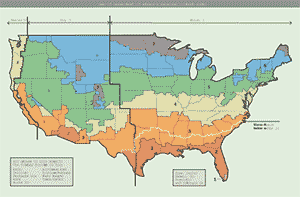How Is LEED Faring After Five Years in Use?
Additional concerns
Many accuse LEED of being too bureaucratic. Some complain about the time and paperwork involved in documenting applicable strategies. Others point to USGBC's reliance on just one wood certification program-Forest Stewardship Council-as too narrow-minded. And yet others describe experiences in which LEED certifiers got so bogged down by technical details that they lost sight of the tremendous environmental progress being made right before their eyes by noteworthy design and practice strategies.
|
The list of complaints and suggestions go on-from frustration with the cost of pursuing certification and a confusing energy-modeling protocol to a proposal that the final evaluation be based on environmental-health indicators (from habitat diversity to water quality) after the building is up and running.
Peer pressure
In addition to external critiques, LEED is facing its first potential competitor-Green Globes, a Web-based sustainable design tool for new commercial construction. First released for the Canadian market several years ago, Green Globes was adapted and brought to the U.S. in 2004 by the Green Building Initiative (www.thegbi.org), which got its start working with the National Association of Home Builders to promote the association's Model Green Home Building Guidelines. In a March 2005 article in Environmental Building News, Nadav Malin wrote that "GBI is supported by the Wood Promotion Network and a number of other industry groups that object to some provisions in LEED … ."
Although Green Globes offers some features not currently in LEED-including its online platform and links to energy-modeling and LCA software tools-it still lacks many of the characteristics that give LEED its strength. According to Vivian Manasc of Manasc Isaac Architects in Edmonton, Alberta, a founding member of Canada's Green Building Council, "No other rating system is as broadly based in the marketplace as is LEED. With USGBC's 4,000-plus members getting to vote on what is in the rating system, LEED has large public input. It's easy to write an elegant system as long as you don't have to deal with the messiness of the marketplace."










